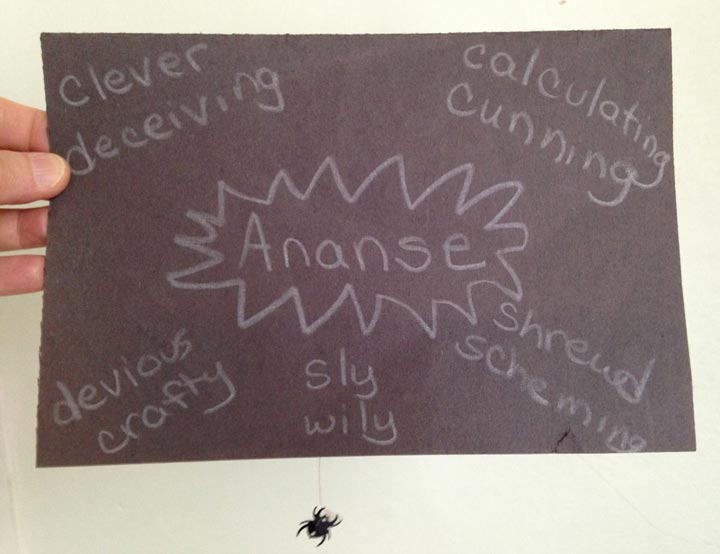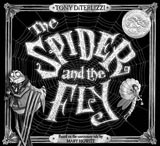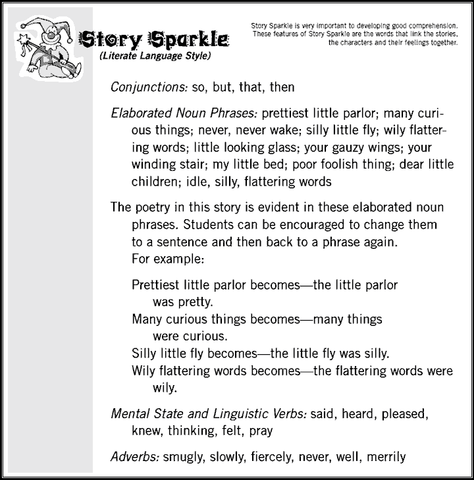Menu
-
- Home
-
About Us
-
The Approach
-
Linking Language & Literacy
-
MindWing Learning
-
Learning Resources
-
SHOP
-
Blog
-
- About MindWing
- Our People
- Contact Us
- Your Account
- Login
-
Spain (EUR €)

Spiders! 5 Books, Resources and Activities
August 07, 2018 7 min read
As so often happens when I see a certain book or project, it reminds me of particular lessons that I taught while teaching at the former Juniper Park School in Westfield, MA. A recent display of books on spiders at our local library did just that. Below are some ideas on spider-related books that you may want to try this summer or tuck them away in your files for future use. In addition to other resources, several of the selections below are Anansi trickster tales which were first told by the Ashanti people in Ghana.
We begin our lesson suggestions with one of the Anansi stories adapted and retold by Eric A. Kimmel and illustrated by Janet Stevens. These were always popular with second and third graders. I liked to use them to reinforce the SGM® complete and interactive episodes and character traits.

Anansi and The Talking Melon

Anansi Goes Fishing

Anansi and The Moss-Covered Rock

Anansi and The Magic Stick
 1. Anansi and The Magic Stick
1. Anansi and The Magic Stick
Below is an SGM outline of this story. Please note that here you can map it out as it best suits the needs of your students. This is the way I did it in our third grades as I wanted to reinforce multiple episodes and perspective taking. The mapping was completed in two days so that the students could practice retelling the story after each perspective.
- Character: Anansi
- Setting: Anansi’s neighborhood
- Kick-Off: All the animals are working—and after being called lazy by Warthog, Lion, and Zebra—Anasi goes off to find a quieter place to sleep. He sees how neat and tidy Hyena’s house is.
- THINKS: What is Hyena’s secret?
- Feeling: curious
- Plan: To find out Hyena’s secret
- Action: Sees hyena use the magic stick
- Direct Consequence: Anansi wants to use the stick, too
- Resolution: amazed and determined; becomes a new plan
- New Plan: to take the magic stick for his own use
- Action: grabs the stick
- Action: orders the stick to carry him home
- Action: orders the stick to gather all the trash …it throws trash in Lion’s yard)
- Action: orders the stick to fix house… it splashes bright pink paint over the fence onto Zebra
- Action: orders the stick to get the garden in order … it throws weeds into Warhogs tomato patch
- Direct Consequence: Anansi gets tired watching all the work and falls asleep… after ordering the stick to keep watering and not to stop
- Resolution: relaxed, sleeping
- New Kick-Off: Anansi awakens to find the entire neighborhood flooding
- Feeling: shocked, afraid! “Help!”
- Plan: to try to make the water stop
- Action: Tries to shout out the magic words…Canabra-Catabra-Cadabra?
- Direct Consequence: Can’t remember the correct words and the water keeps flowing; Hyena comes by and stops the flooding and Anansi, unknown to the other characters, enjoys this new setting on the other side of the lake where he is planning new tricks!
- Resolution: relieved, comfortable, content
Here is a good opportunity to show Hyena’s perspective, especially since he never finds out that Anansi has taken the magic stick in the first place.
- Character: Hyena
- Setting: neighborhood, in the flood
- Kick-Off: floating and is looking for his magic stick
- Thought Bubble: REALIZES the stick is causing the flood KNOWS I must find it
- Feeling: a bit worried
- Plan: to find the magic stick and stop the flooding
- Action: asks Anansi if he has seen a magic stick (of course not knowing Anansi took it!)
- Action: leans over the water and repeats the magic words
- Direct Consequence: The flooding stops and Hyena tells everyone to learn to enjoy the lake, which they do
- Resolution: relieved
And also from the perspective of the other animals.
- Characters: other animals
- Setting: a new setting with the lake
- Feeling: the lake is now part of their neighborhood
- Thought Bubble: REALIZES The lake is there to stay
- Feeling: surprised, determined
- Plan: To enjoy the new life with the lake
- Action: build new lakeshore homes
- Action: enjoy the water
- Direct Consequence: They are enjoying the new setting but they realize they miss Anansi
- Resolution: Sad about Anansi (who, unknown to them, is actually planning new tricks!)



This is a great selection to discuss multiple episodes from different perspectives using both the text and illustrations as shown above. You could use different student markers to retell the story from more than one perspective and break this up into two days to add emphasis to the two different perspectives. As always, your presentation depends upon your goals/objectives for your students.
 An author’s note is presented at the end of the book.
An author’s note is presented at the end of the book. 
If you are not familiar with Disney’s “The Sorcerer’s Apprentice” from Fantasia, there are videos available online. Have children view the video after the above activity with the Magic Stick book and then use the Compare/Contrast map to show the likenesses/differences between the two selections. A sample of responses taken from a small group of third graders is shown below:

Any time you get to share multiple retellings of stories with variations on a particular character or plot, it is a wonderful opportunity to have compare/contrast activities, such as our blog on lessons for Little Red Hen.

 In addition, the second graders enjoyed a Setting activity where we took ideas of how the setting changed from the beginning of the story to the end. We made a list and then the students illustrated the two settings… some of the students wrote descriptions of both using the list map as a basis. Here you can emphasize the tie words… both, same, different.
In addition, the second graders enjoyed a Setting activity where we took ideas of how the setting changed from the beginning of the story to the end. We made a list and then the students illustrated the two settings… some of the students wrote descriptions of both using the list map as a basis. Here you can emphasize the tie words… both, same, different.



2. Ananse’s Feast, An Ashanti Tale
Retold by Tolowa M. Mollel and illustrated by Andrew Glass (Amazon link).




3. Anansi Does the Impossible, An Ashanti Tale
Retold by Verna Aardema and Illustrated by Lisa Desimini (Amazon link).

 of buying the tales of the storytellers from the Sky God for the earth people. This is a great selection to show teamwork and the creative thinking of Aso!
of buying the tales of the storytellers from the Sky God for the earth people. This is a great selection to show teamwork and the creative thinking of Aso!

 The Yolen version would present an opportunity to use and discuss the character map focusing on Anansi’s personality traits. How many synonyms for “Tricky” can the students come up with? Below is a simple project that our 4th graders did with the list when completed.
The Yolen version would present an opportunity to use and discuss the character map focusing on Anansi’s personality traits. How many synonyms for “Tricky” can the students come up with? Below is a simple project that our 4th graders did with the list when completed.



4. The Spider and the Fly
Written by Tony DiTerlizzi. This is based upon the cautionary tale by Mary Howitt (Amazon link).
 There is an extensive analysis of this selection for students in third grade and up in East Meets West for the Holidays and Important Life Events written by Judy K. Montgomery and Maryellen Rooney Moreau, including suggestions related to a theme, retelling strategies, and expository text features. If you are not familiar with the two books in this series, check them out for ideas for over twenty books which you can for immediately implement.
There is an extensive analysis of this selection for students in third grade and up in East Meets West for the Holidays and Important Life Events written by Judy K. Montgomery and Maryellen Rooney Moreau, including suggestions related to a theme, retelling strategies, and expository text features. If you are not familiar with the two books in this series, check them out for ideas for over twenty books which you can for immediately implement.
 Below is an excerpt from the East Meets West book:
Below is an excerpt from the East Meets West book:

5. Online Resources and Books
Finally, there are multiple online resources and informational books you may access that would relate to expository information regarding spiders. As I am partial to books, below are a two of my favorite ones that can be used to reinforce expository text structures:

 Spiders written by Gail Gibbons would be ideal to use with the “My Research” cut and fold booklet found in The Core of The Core manual which has been featured in past blogs: Expository “My Research” Cut–and-Fold Booklet AND Fireflies! Story Structure, Thoughts & Feelings, Expository Features and Artwork!
Spiders written by Gail Gibbons would be ideal to use with the “My Research” cut and fold booklet found in The Core of The Core manual which has been featured in past blogs: Expository “My Research” Cut–and-Fold Booklet AND Fireflies! Story Structure, Thoughts & Feelings, Expository Features and Artwork!
 Spiders by Seymour Simon provides a great deal of information on spiders and could be used to expand on one of the following tasks:
Spiders by Seymour Simon provides a great deal of information on spiders and could be used to expand on one of the following tasks:



 MindWing has a full array of expository maps using the familiar SGM® icons to help with your informational instruction.
MindWing has a full array of expository maps using the familiar SGM® icons to help with your informational instruction.
Any of the above activities may be modified to meet your student goals/objectives. The SGM® icons provide you with a concrete way to discuss comprehension strategies with students!
Leave a comment.
Comments will be approved before showing up.


